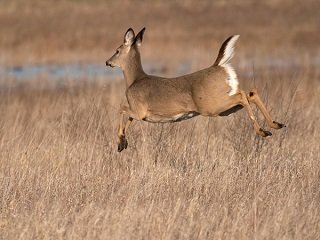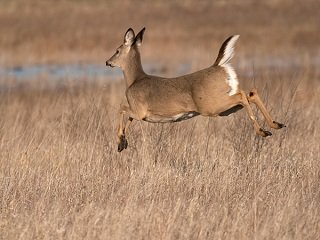 Most bowhunters have tasted the bitterness of defeat and failure. There a thousand different reasons–known and unknown–why we fail, but here are four things you can improve on to help you reach your potential as a successful bowhunter.
Most bowhunters have tasted the bitterness of defeat and failure. There a thousand different reasons–known and unknown–why we fail, but here are four things you can improve on to help you reach your potential as a successful bowhunter.
Attitude. I’m as guilty as any hunter for leaving the woods before all possibilities are exhausted. It is a sin in the hunting world, especially while bowhunting, but sometimes it is very hard to stay in the hunt when everything around you is telling you to leave. This is when you need to have that winning attitude and view every failure as a learning experience. Even if you scoff at perpetual optimism in your civilian life, adopting that practice will give you a relentless attitude needed to persevere.
Stand Location. Whether it is a tree stand, ground blind or natural stand, stand location is one of the most important ingredients to a successful hunt. Most deer hunters know about wind direction, but playing the wind involves more than the direction it is blowing. If you hunt in any type of terrain, scent can be carried in thermal and downdrafts which are controlled by temperatures. Cool air drops and warm air rises, so if you are hunting in deep woods that are constantly shaded, then be aware that your scent will drop straight down to a deer’s nose no matter how high you are in a tree. Also, have several stands available so that no specific wind direction will ruin your hunt.
Scouting. One of the first rules of scouting is to know when to scout. If you are hunting Whitetails in the fall, it is not a good idea to go for a scouting walk through your hunting area in late September or October. You can easily spook a mature buck right out of your acreage or force him to turn nocturnal.
Not many changes occur on the standard Whitetail hunting location, so make notes of old rubs and scrapes that you might run across in the spring time. Another key to scouting is to not be seduced by an abundance of deer tracks. When you run across heavy chewed up areas, it is mostly does, yearlings and fawns that make those deer highways. Mature bucks keep mostly to themselves, so look for small out of the way trails that run parallel to heavily used trails.
Scent Control. The main objective of any predator is stay upwind of its prey. Today’s hunters have many products available that can help them beat a deer’s nose, so do some homework and invest in the best scent elimination products you can afford. However, the best way to succeed in scent elimination is to not ever give a deer the chance to smell you in the first place.








